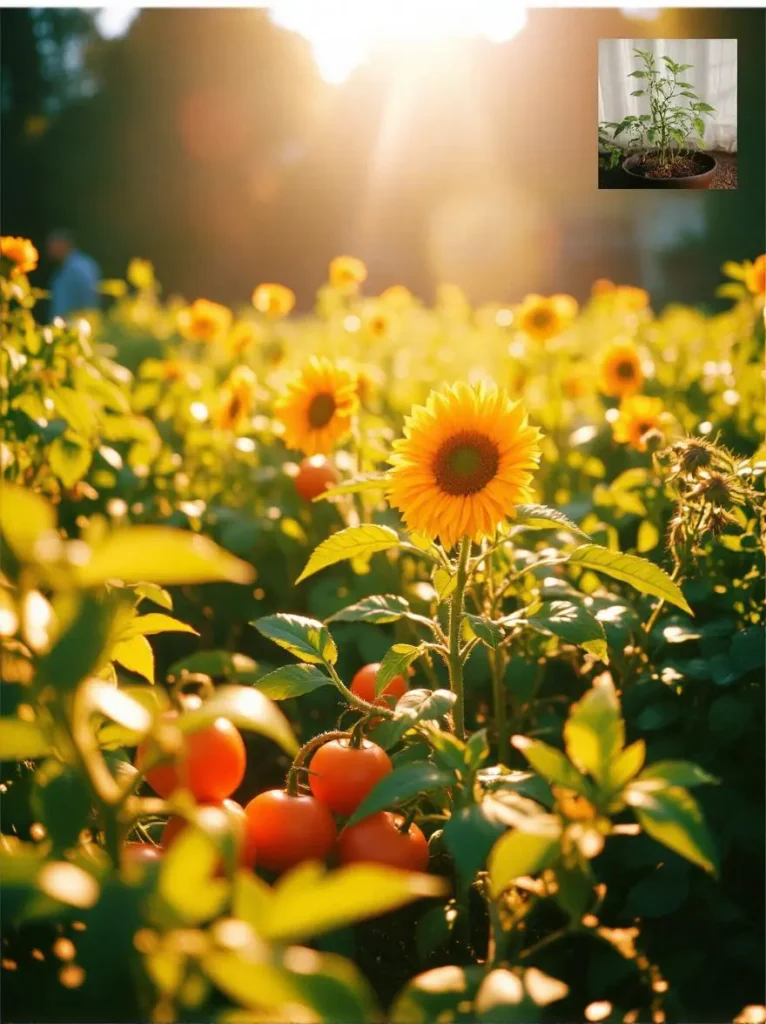Starting a garden is an exciting adventure, but it can feel a bit overwhelming at first. One of the most important steps is choosing the perfect spot for your garden. The right location can make all the difference in how your plants grow and how much you enjoy the process. In this guide, we’ll walk you through the key factors to consider when selecting a garden spot, making it easy for beginners to get started on the right foot.
Table of Contents
The Importance of Sunlight
Most vegetables and flowers need at least 6 hours of direct sunlight each day to thrive. Sunlight is like fuel for plants—it powers their growth and helps them produce the fruits and flowers we love. To find the sunniest spot in your yard, spend a day observing how the sun moves across your space. Check in the morning, at midday, and in the afternoon to see which areas stay bright and which fall into shadow. South-facing spots usually get the most sun, but every yard is different, so it’s worth taking the time to watch and learn.
If you’re planning to grow vegetables in winter, sunlight is even more crucial because the days are shorter and the sun is less intense. For tips on making the most of your winter garden, check out our guide on Winter Gardening Ideas: How to Grow Vegetables in Cold Weather.

Soil Quality: The Foundation of Your Garden
Healthy soil is the foundation of a successful garden. Good soil should be loose, well-draining, and rich in organic matter. Here’s a simple way to test your soil:
- Dig a small hole about a foot deep.
- Fill it with water and see how quickly it drains.
- If the water disappears within a few hours, your soil has good drainage.
- If it takes longer, you might need to improve it by adding compost or other organic materials.
You can also feel your soil to understand its texture:
- Sandy soil feels gritty and drains quickly.
- Clay soil feels sticky and holds water.
- The ideal soil, called loam, is a balance of both.
Most plants prefer a soil pH between 6.0 and 7.0, which you can test with a simple kit from your local garden center. If your soil needs a boost, mixing in compost or well-rotted manure can work wonders.

Accessibility: Keep It Close and Convenient
Choose a spot that’s easy to reach from your home. If your garden is too far away, you might forget to water or weed it regularly, and that can lead to frustration. Plus, there’s something magical about stepping outside to pick fresh herbs or veggies for dinner—it’s one of the joys of gardening! Make sure your garden is also close to a water source, like a hose or rain barrel, to make watering as easy as possible.

Start Small: Size and Space
As a beginner, it’s tempting to go big, but starting small is smarter. A small plot or a few containers are easier to manage and less overwhelming. Try beginning with:
- A 4×4 foot plot, or
- A couple of large pots.
This gives you enough space to grow a variety of plants without feeling like you’re in over your head. You can always expand as you gain confidence and experience.

Protection from the Elements
Gardens need some shelter from strong winds, which can damage plants and dry out the soil. If your yard is windy, consider planting near:
- A fence,
- A hedge, or
- Even a row of tall plants to create a natural windbreak.
Also, avoid low-lying areas where cold air can settle—these spots are more prone to frost, which can harm your plants.

A Personal Note: Learning from Mistakes
When I started my first garden, I was so excited that I planted it in the shadiest part of my yard. My poor tomatoes barely grew, and I was so discouraged. But once I moved them to a sunny spot, they thrived, and I was hooked on gardening. The lesson? Choosing the right spot is crucial, but don’t be afraid to experiment and learn as you go. Every garden is a journey, and every step is a chance to grow.

Conclusion: Your Perfect Garden Spot Awaits
Choosing the perfect garden spot is all about finding a balance of sunlight, soil quality, accessibility, and protection. Once you’ve picked your spot, make sure you have the right tools to get started—check out our guide on Essential Gardening Tools Every New Gardener Needs for recommendations. Remember, gardening is a journey, and every step is a chance to learn and grow. So, grab your shovel and start digging your perfect garden spot is waiting!


